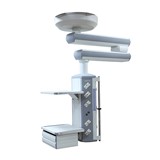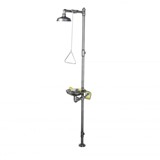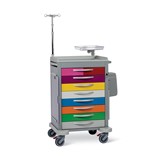There are many causes of long waiting times that vary at an institutional level. However, it is clear that the number of patients seen in emergency departments is escalating, while provision of medical staff and infrastructure is often inadequate.
The greater demand and a lack of supply have combined to place undue pressure on emergency departments. Different aspects of this issue are under frequent discussion in the Australian media, including a recent publication of analysis by the Australian Institute of Health and Welfare (AIHW).
As reported by the Australian Medical Association, the AIHW's results highlighted the unrelenting surge of patients into the emergency room: "While demand for emergency department care fluctuates during the day, the figures show any quiet time during the week is likely to be brief."
Waiting room overflows: effects and short-term solutions
Long waiting times – and as a consequence, crowded emergency departments – are a recurring theme in many countries. Detrimental effects of an overflowing waiting room include a higher risk of infection and accidents, delays in treatment (possibly resulting in patient deterioration), as well as higher complication and mortality rates. Above-capacity emergency departments also lead to ambulance diversion or boarding until a bed becomes available, which are harmful to the patient.
These approaches only divert patients to other hospitals and departments, and are ineffective in terms of addressing the underlying issues.
Unsurprisingly, this 'system overload' situation has been associated with lower compliance to care standards, and staff feeling overwhelmed and potentially undervalued. To improve patient care, staff conditions, and cost-effectiveness, both resource and capacity problems need to be solved urgently.
Long-term strategies
Periodic imbalances in supply and demand may be considered inevitable, given the inherent lack of predictability when dealing with non-scheduled and potentially urgent cases. Nevertheless, successful procedural changes that lessen the burden of long waiting times have been demonstrated.
As an initial step to adapt effectively, monitoring should be conducted to accurately identify bottlenecks within a specific emergency department or hospital.
Factors contributing to emergency room crowding may occur at different stages of patient contact, which as suggested by Dr Sandra Schneider in the journal of Academic Emergency Medicine, may be thought of as input, throughput and output.
In a weekly series of MedicalSearch articles, these three steps in emergency department care will be discussed, with an emphasis on evidence-based methods aimed at alleviating the strain on emergency departments.


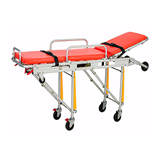
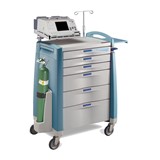

-160x160-state_article-rel-cat.png)



